Though garlic can thrive under various environmental conditions, proper care is required to get big bulbs. It is common to have different sizes of bulbs, but constant small bulbs are a problem.
In general, small garlic bulbs result from improper fertilization, poor watering, compact soil, deep or close planting, and planting at the wrong time. To prevent this, you should feed and water garlic well and plant them at the right depth with appropriate space and at the right time.
However, there are a few more reasons behind small bulbs. This article will explain the reasons behind small bulbs and how to prevent them. So, let’s dive into it without delay.
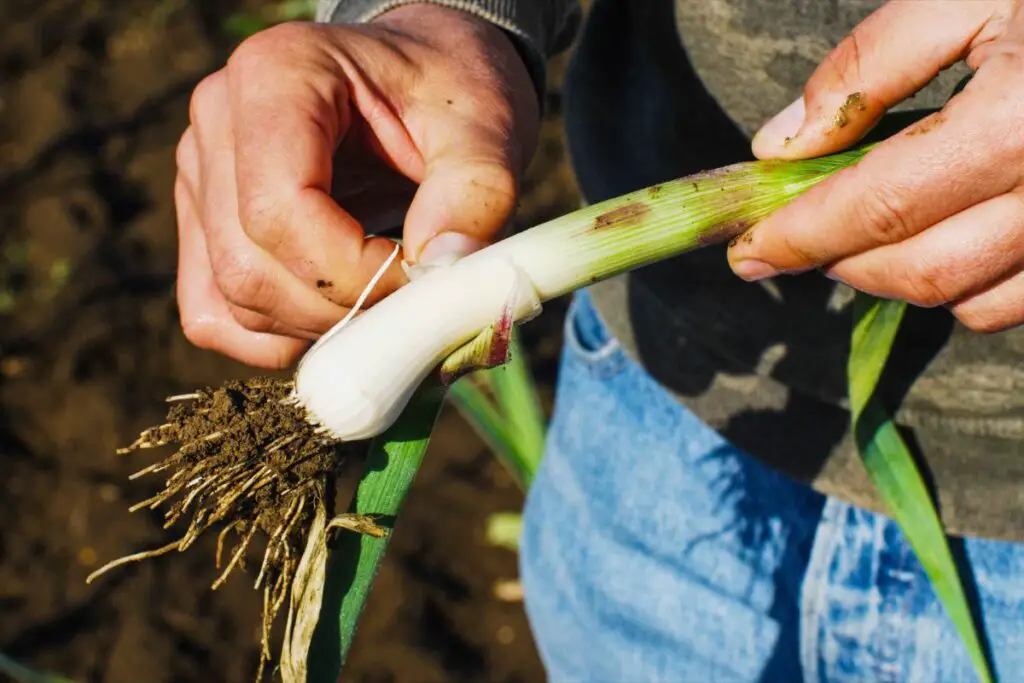
You are not giving the plant enough water.
Though garlic can tolerate dry soil for some time, it should not last for a long time.
Garlic needs enough moisture with sunlight and nutrients to grow bigger and fuller.
If you keep the soil dry and the plant dehydrated, the plant will produce smaller bulbs.
It will stress the plant and reduce yields.
You are not giving them enough nutrients.
Garlic requires many nutrients to grow bigger, healthier, and tastier.
The plant will not grow well if you don’t give it enough nutrients.
The bulbs will be smaller and not flavorful.
Sometimes, the plant will stop growing and won’t produce any bulbs.
You are overfertilizing
Garlic is considered to be a heavy feeder.
But that does not mean you should fertilize them without following a proper time or measurement.
Excessive nutrients force the plant to focus on producing leaves rather than increasing the bulb size.
Due to this, the bulbs will become smaller in size.
The goal is to get more bulbs in bigger sizes and not lots of leaves.
Also read: When To Fertilize Garlic? (+Best Fertilizer For Garlic)
Rust disease
Garlic requires adequate sunlight to grow and develop well.
Lack of sunlight will make the bulbs survive several diseases because the water you provide won’t get dried up easily.
Constant damp conditions can give rise to various diseases, one of which is rust.
Rust can be identified from the leaves.
The older leaves will have white and orange dots, which will spread to the new leaves.
Rust can also reduce the bulb’s size and affect the plant’s overall growth and development.
You have planted the cloves too close.
Garlic cloves keep on fighting for water and nutrients to survive and grow big.
If you don’t provide them with enough space, the cloves will fight for space, moisture, and nutrients and get exhausted.
Due to this exhaustion, the bulbs won’t be able to grow much bigger.
You will constantly receive small bulbs.
Sometimes, lack of space will also lead to root entanglement.
Once the plant sprouts out, it will also fight to get maximum sunlight.
Though the plant may survive, you will be getting undersized bulbs.
It would be best to avoid overcrowding by controlling the weed growth.
Excessive weed growth can also reduce the bulb size, resulting in tiny bulbs.
Compact soil
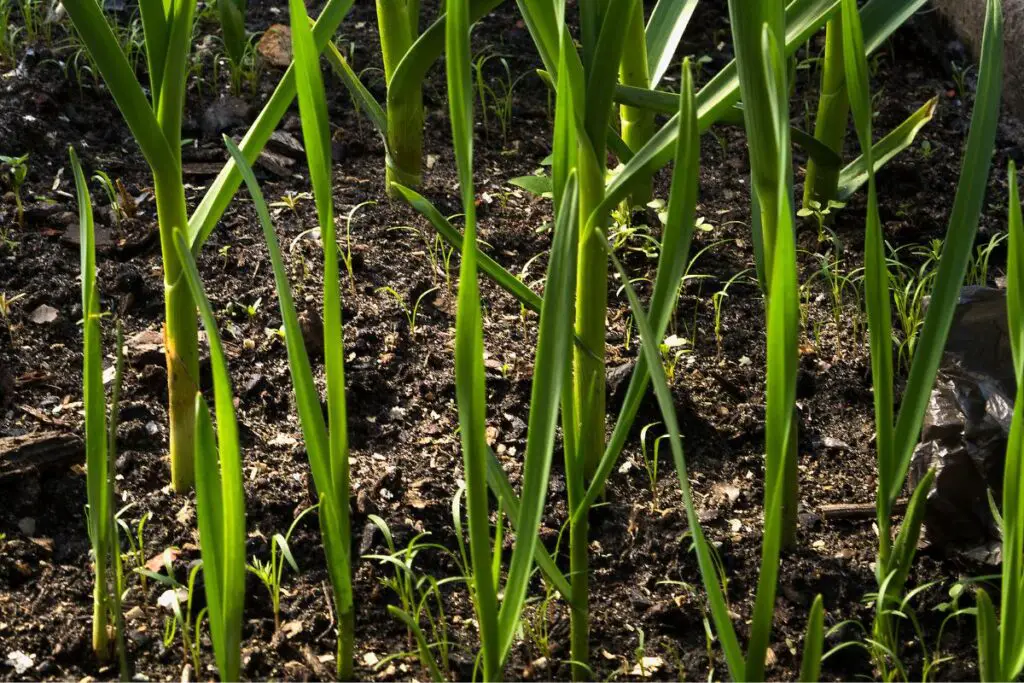
When the garlic cloves develop into bulbs, they keep expanding in size and dislocate from the soil.
If the soil is too compact and tight, it won’t allow the bulbs to expand flexibly; thus, the plant will produce small bulbs.
Also read: What Type Of Soil Is Best For Garlic? (Best Soil Mix For Garlic)
Looking for gardening supplies? We have tested 100's of products before recommending them to you guys. Check out our best pick below:
| Image | Gardening Supplies | Best Price? |
|---|---|---|
 Top
Top Top
Top | Raised Garden Bed Kit | Check On Amazon |
 | XLUX Soil Moisture Meter, Plant Water Monitor, Soil Hygrometer Sensor for Gardening, Farming, Indoor and Outdoor Plants, No Batteries Required | No Results |
 Top
Top Top
Top | 82 Pcs Garden Tools Set and Extra Succulent Tools Set | Check On Amazon |
 | Joeys Garden Expandable Garden Hose with 8 Function Hose Nozzle, Lightweight Anti-Kink Flexible Garden Hoses, Extra Strength Fabric with Double Latex Core, (50 FT, Black) | No Results |
 Top
Top Top
Top | Dual Chamber Compost Tumbler | Check On Amazon |
 Top
Top Top
Top | Sunnyglade Plant Stakes | Check On Amazon |
 Top
Top Top
Top | Organic Cold Pressed Neem Seed Oil | Check On Amazon |
 Top
Top Top
Top | Mighty Mint Gallon :-Insect and Pest Control Peppermint Oil | Check On Amazon |
 Top
Top Top
Top | Scotts DiseaseEx Lawn Fungicide | Check On Amazon |
 Top
Top Top
Top | Jacks Classic 20-20-20 All Purpose Fertilizer | Check On Amazon |
 Top
Top Top
Top | 30,000 Seeds Pollinator Attracting Wildflower Mixture | Check On Amazon |
 Top
Top Top
Top | Survival Vegetable Seeds Garden Kit-Over 16,000 Seeds | Check On Amazon |
Planting too deep
It would be best not to plant garlic too shallow or too deep.
In some areas, garlic cloves are planted deep enough so that the cloves don’t get exposed to harsh weather conditions.
But, excessive deep planting is not good.
The deeper the cloves are kept, the more pressure they will have to handle under the soil.
This pressure will make the bulbs harder to increase in size, thus causing small bulbs.
You are letting the Hardneck scapes grow.
There are two types of garlic – Softneck and Hardneck.
The Hardneck varieties produce a flower stalk called scapes.
Harvest these scapes when they form spirals.
They are as flavorful as the garlic cloves.
Letting these scapes grow and increase will make the bulbs reduce their size.
The scapes will constantly draw energy and nutrients from the bulbs to grow more.
Due to this, the bulbs will become smaller.
Also read: How Deep And Far Apart Do You Plant Garlic?
Garlic planted early or late.
It would be best to plant garlic in the fall for the best results.
If you plant them too early, the plant will grow too much in the fall and waste energy that the bulbs will require in the spring.
Therefore, the bulbs will receive less energy and become smaller.
On the contrary, planting garlic too late won’t give the cloves enough time for root and shoot development before the frost arrives.
Soon, the plant will go dormant.
Due to the lack of time and proper development, the bulbs won’t be able to reach their actual size before harvest.
Letting the whole plant die before harvest
The right time for harvest is when half of the leaves have turned brown, and some are still green.
Suppose the whole plant dies, and you approach harvesting after that.
In that case, the bulbs’ size will decrease, their lifespan will get reduced, and they become vulnerable to rotting.
The bulbs will also split open.
Planting small cloves
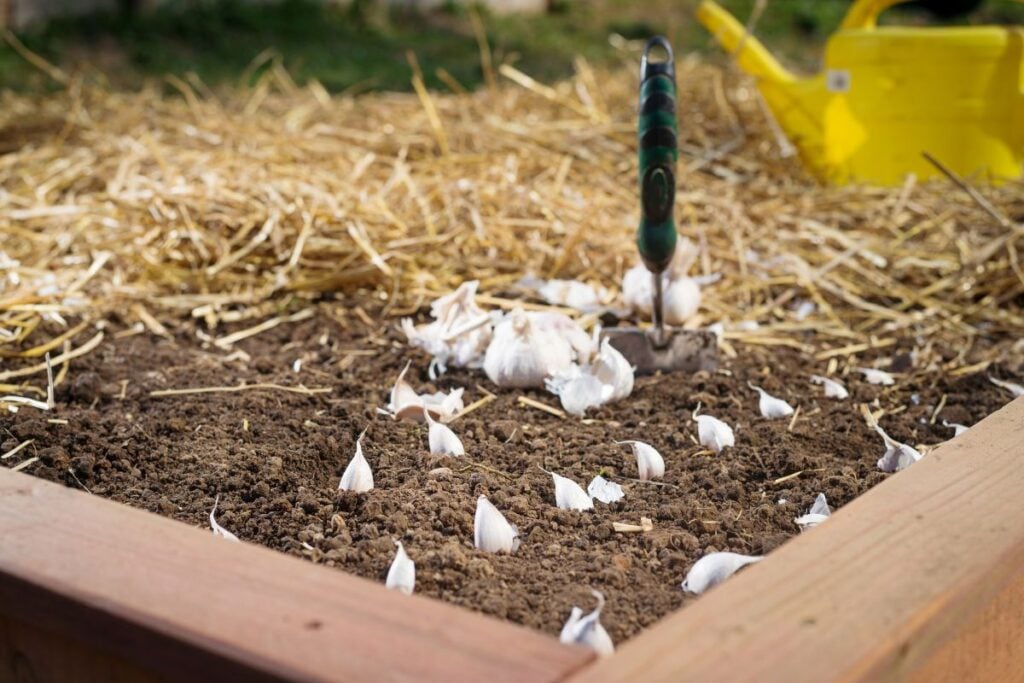
No matter how well you take care of your plant and give them their right requirements in time, you won’t be able to get big bulbs if you plant small cloves.
Smaller cloves will result in smaller bulbs.
How can you get bigger bulbs?
To prevent smaller bulbs, you need to plant the cloves properly and take good care of them by providing them with the right requirements.
Knowing the causes behind small bulbs can help you know what was wrong and how you can fix it.
However, you cannot change the small bulb into a big one.
But, you can get bigger bulbs next time by preventing the conditions responsible for small bulbs.
Here are some steps to get bigger bulbs:
Give the plant enough sunlight.
Garlic requires 6-8 hours of sunlight daily for adequate growth and healthy, tasty, and big bulbs.
Find a sunny spot in your garden, and then plant your garlic.
Excessive light won’t harm the plant much.
But lack of light can invite diseases and reduce the plant’s lifespan or the bulb size.
The plant will reward you with bigger and tastier bulbs with adequate sunlight.
Also read: How Much Sunlight Do Garlic Plants Need?
Water the plant well
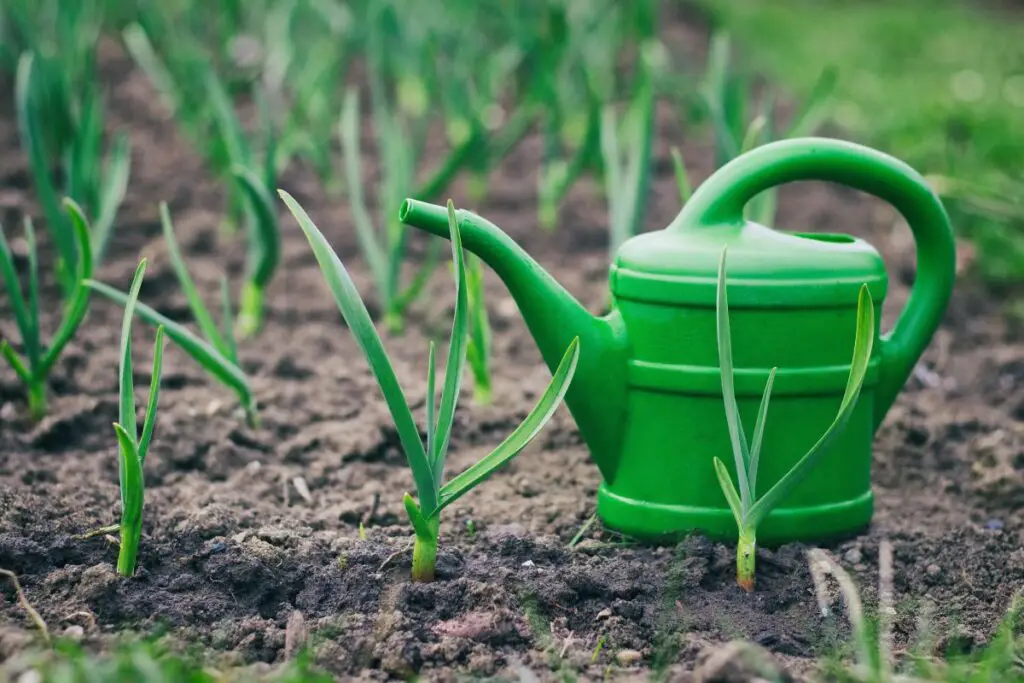
Garlic enjoys consistently moist soil.
Water the garlic enough to keep a moist soil, but don’t overwater it.
Let the soil dry before you water them next.
With proper moisture content, you will get bigger garlic bulbs.
You can water the plant every 3-5 days in spring and summer, every 7-10 days if there is frequent rain, and avoid it in the winter.
Always allow the top 1-2 inches of the soil dry before watering next.
Also read: How Much Water Do Garlic Plants Need? (+How Often)
Fertilize them properly
While preparing the soil bed before planting, add some compost or manure to make the soil nutritious for garlic.
Add some fertilizers if required.
Avoid winter fertilizing as garlic stays dormant in frozen ground.
Don’t fertilize too much or too little. Give the plant enough nutrients to produce healthy and big bulbs.
Check the soil
You need to check the soil before planting.
It should be well-drained and loose.
Loose and well-aerated soil will allow the bulbs to grow and expand flexibly and let the roots get enough oxygen.
If the soil is compact, till and break it to loosen and let it settle for some days.
Amend it with compost.
The best soil for garlic is sandy loam.
Plant the cloves at a proper depth and space
The right depth for planting garlic is only 2-4 inches.
In some areas, garlic is planted around 1.5-2 inches deep and then covered with a thick 6-inch layer of straw.
Don’t plant them too deeply, or they will face the soil pressure, resulting in small bulbs.
Deep planting also leads to late sprouting.
The right spacing depends on the variety.
In general, you should plant garlic 4-6 inches across.
It would be best to plant elephant garlic 8-10 inches across.
Plant the bigger cloves
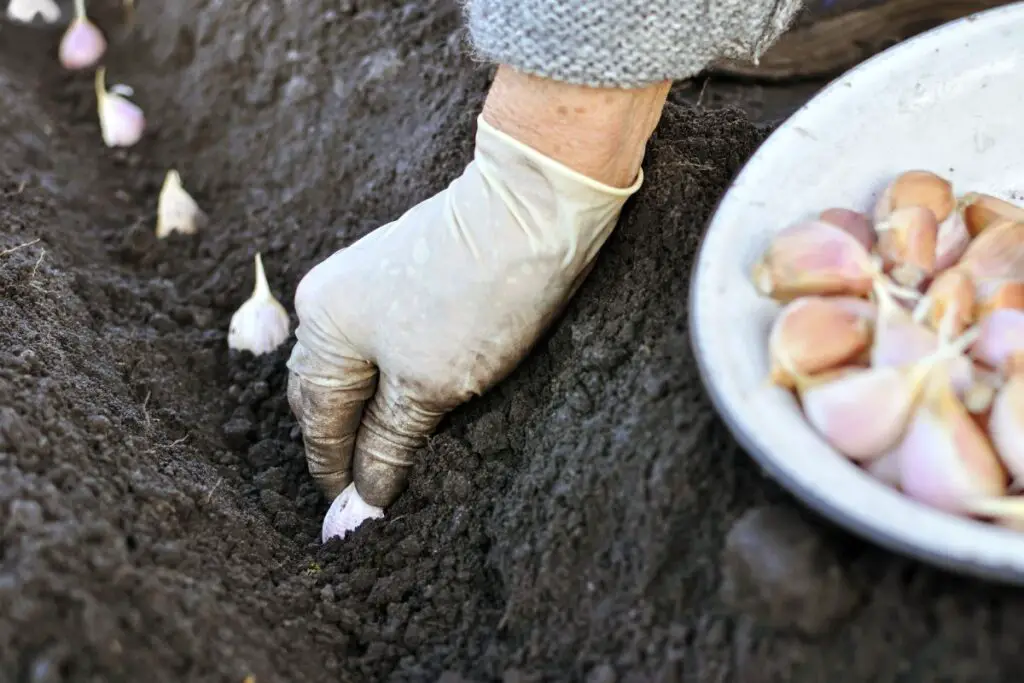
To get bigger bulbs, you should choose the bigger cloves for planting.
Do not expect big bulbs from the small ones.
Harvest the scapes
The Hardneck varieties will produce scapes in the spring.
These scapes will need to be removed and harvested.
When the scapes form spirals in two rounds, you will know they are ready for harvest.
You can use them in your dishes because they have a sweet taste and garlic flavor.
Removing the scapes will stop them from drawing the energy from the bulbs.
This energy will remain stored in the bulbs and help them maintain their big size.
Harvest garlic at the right time
Garlic is ready for harvest when half of the lower leaves have turned yellow, and some green leaves are left at the top.
As a general rule, you need to harvest garlic when the plant starts to die, but the whole plant is yet to die.
The green leaves at the top should be allowed to stay with the garlic bulbs at harvest time.
Until the bulbs are cured, cleaned, and stored, the bulbs will absorb the nutrients from these green leaves.
Also read: When Is Garlic Ready To Harvest? (+How To)
Plant garlic at the right time
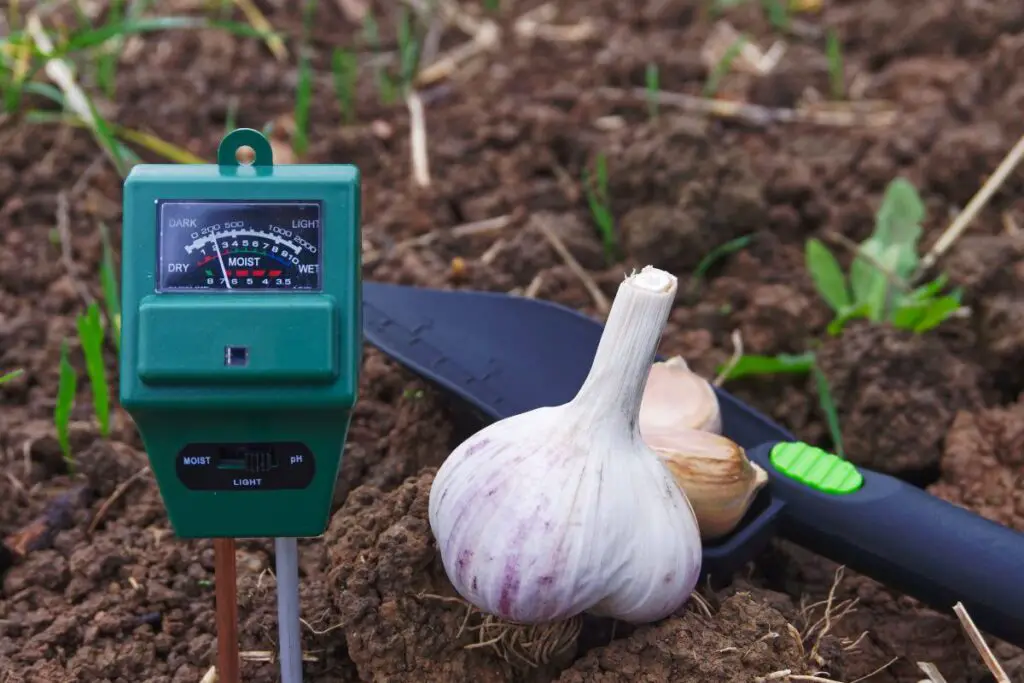
The right time to plant garlic is in the fall, 3-6 weeks before the first frost.
It will give the plant enough time to develop roots and have cold weather to trigger bulb development.
It also won’t let the plant waste any energy in spring.
Also read: When To Plant Garlic Bulbs? (+Seasonal Guide)
Mulch the soil bed
After planting the cloves, add mulch over the soil bed, around 1 inch, with straw or leaves to stop the weed growth.
Weeding can prevent the rainwater from entering the soil, and thus it stays on the surface.
Suppressing the weeds will let the rainwater enter the soil and remain moist for a long time, which is needed by the garlic.
Can you replant these small bulbs?
Even if your bulbs have come out to be smaller than you expected, you can plant the cloves of these bulbs to get more garlic in the coming year.
Separate the cloves and plant the largest bulbs to get bigger bulbs in the next year’s planting.
It is not completely disappointing to get the small bulbs.
Besides, if you have planted both small and big cloves, you can get some bigger bulbs with these small ones.
You can save both of them for replanting next year.
Why did my garlic bulbs not split into cloves?
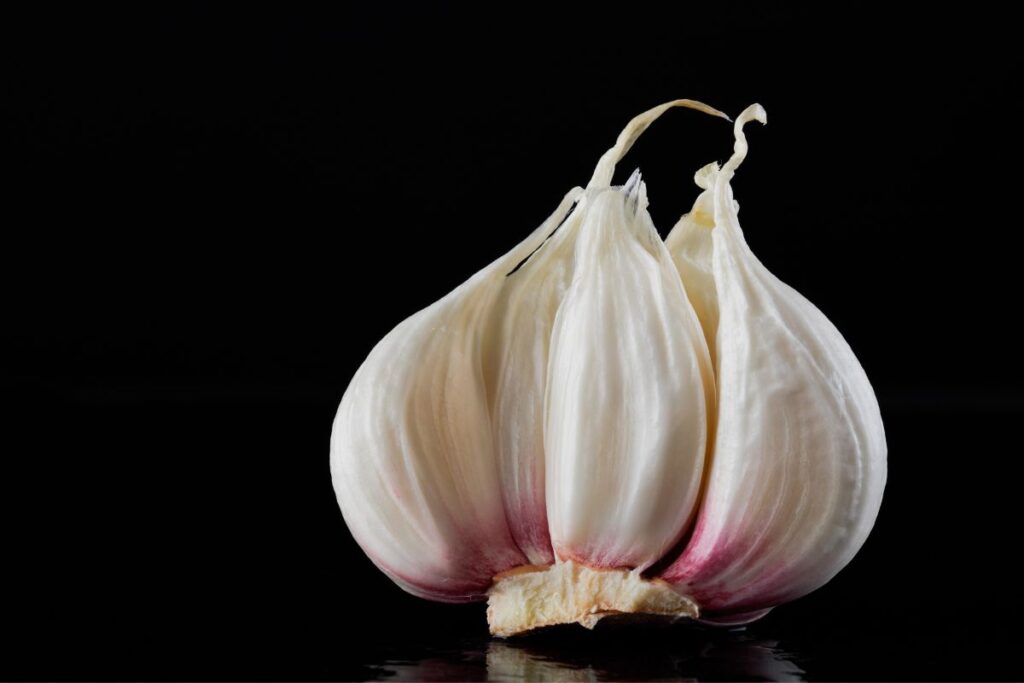
It is not so discouraging to get small bulbs, but it is indeed saddening to see that the bulbs have not split into individual cloves.
After you plant the cloves, they will take a couple of weeks and some cold nights at 50°F for bulb development and splitting the multiple cloves.
Suppose the garlic clove has not developed into a bulb with multiple cloves, or it remained a big single clove.
It could be because the planted cloves might have received a light winter which wasn’t enough to trigger bulb development.
Or, you have planted so late that they missed the winter cold.
Final thoughts
Your garlic plants will always reward you with bigger, tastier, and healthier bulbs if planted properly and supervised well.
Plant garlic in the fall, 2-3 inches deep and 4-6 inches apart. For elephant garlic, maintain a space of about 8-10 inches. Give enough water and nutrients in limited amounts, neither too much nor too little.
Let garlic have enough sunlight for at least 6-8 hours. Mulch the soil bed to suppress weeds. Prepare the soil bed and amend it with compost. Break the soil if it’s too compact. Harvest the scapes and garlic at the right time and plant big cloves to get bigger bulbs.
Reference: The Pennsylvania State University, Garlic Production for the Gardener, University of Massachusetts Amherst, Ohio State University Extension.
